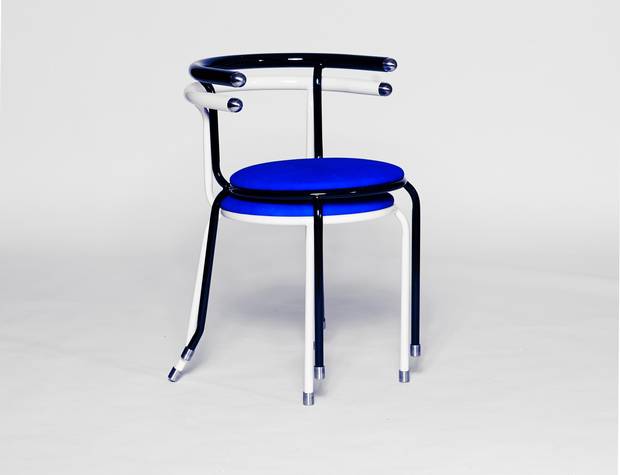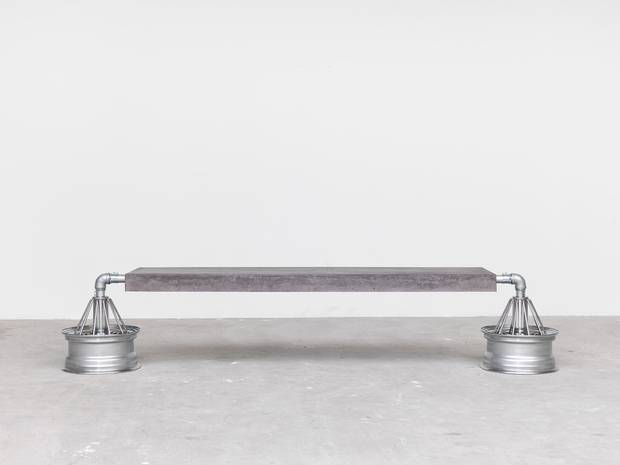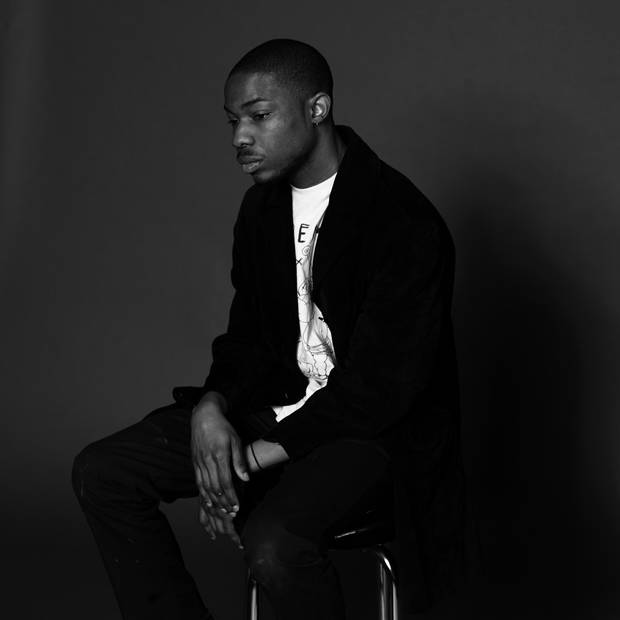Brooklyn, N.Y.-based furniture designer Dozie Kanu could find extravagance in a coffee cup. The 25-year-old rising star is adept at turning banal elements – wheel rims, curtain rods – into high-end appointments. His streetwise, witty pieces are a mix of punk and princely – a richly veined marble side table that rests on filing-cabinet casters – and are coveted by taste-making fans such as rapper (and Kylie Jenner baby daddy) Travis Scott as well as fashion designers Matthew Williams of Alyx and Virgil Abloh of Off-White.
Kanu's high-contrast aesthetic is influenced by pop culture and the belief that luxury doesn't mean merely expensive or exclusive. "Pharrell Williams is a hip-hop musician," Kanu says. "Most people wouldn't categorize him in the luxury world. But he did a collaboration with Louis Vuitton. He did a jewellery collection. Those two high and low worlds can collide." Plus, Kanu says, "you can make a luxury item with cheap materials. I think the basis of luxury is being able to communicate a dream, an uncompromised expression. It is something that needed to be made only because it is nice to have, not because it's needed."
This open-minded perspective is exciting because it positions Kanu to bring design to a new, broad audience. Young, urban and diverse are hardly adjectives used to characterize the now rarefied world of luxury furniture shoppers. But then again, most furniture designers don't reference hip-hop artists alongside French couture houses when describing their influences (especially since many of their customers wouldn't get the references). And given both his age and his supporters – he's represented by top Toronto-born furniture dealer Paul Johnson – he has the potential to lead for a long time.
If Kanu is somewhat of a contrarian, he comes by it naturally. He was raised in Houston to parents who had emigrated from Nigeria. "It was weird for me," he says. "At school, people who didn't know me would assume I was American. But at home, my experience wasn't American; it was African. I felt like I didn't really belong in this culture." Far from being a hindrance, being an outsider has always helped Kanu stand out. As an undergraduate film student at the School of Visual Arts in New York, he was singular in his class for focusing on set design, whereas the rest of his contemporaries studied cinematography and directing. "I wanted to be different," he says. His niche focus meant that his peers, both at SVA and nearby New York University, asked him to work on the sets for their film projects.

Kanu created this poppy, steel-framed chair shortly after finishing at SVA.
Scouring New York's showrooms and galleries looking for inspiration, he developed an appreciation for materials and design, and, while still in school, he took a full-time job making samples for high-end designer Carol Egan. "It was extremely difficult," he says. "Carol knew that I was in school and allowed me to do both. I would open the office, go to class, then after class come back to the office and work."
Egan and Kanu's aesthetics are very different. Egan does classic Hamptons summer manses and Upper East Side townhouses, the likes of which regularly appear in Elle Decor and Architectural Digest. Kanu's work has more grit, but is also more personal, verging on artistic. One of his benches, for example, is suffused with subtle nods to his hometown of Houston. The seat is cast in purple concrete, an allusion to a street drug called Purple Drank that is often mentioned by Southern rap artists. The base is made from matching 84s, 30-spoke rims also known as Texan Wire Wheels that are popular among Houston car enthusiasts. Despite their design differences, Kanu learned a valuable lesson while working with Egan: "I saw how to see an idea all the way through, from inception to completion, from the drawings to production," he says.

The materials used in this bench are a subtle nod to Houston.
That follow-through helped him get noticed at a very young age. Soon after finishing at SVA, he created his very first object in 2015: a poppy, steel-framed chair that echoes the work of mid-century-modern design master Robert Mallet-Stevens. It was noticed by dealer Paul Johnson, who was once described by W Magazine as the hardest-working person in design. Johnson not only purchased the piece, but helped Kanu into his first major design show, Midtown, organized by Salon 94.
Renown, including a profile in The New York Times, followed, as well as a spate of new works including the aforementioned purple bench, marble side table and a quirky coat rack made, in part, from boxing gloves. "It's a huge leap to attain that kind of success so young" says Johnson, who now represents Kanu. "It's like getting into the NHL."
Attaining success is one thing, but maintaining it is another. Kanu isn't fazed, though. He stays grounded by keeping close with his friends and family. "My mom gives me a lot of advice," he says. "I have friends who are successful in their own right, who give me a lot of tips. I surround myself with people who have knowledge to dish" – friends such as Travis Scott, who he grew up with in Houston, and whose stage Kanu designed for Design Miami a couple of years ago.
He also tries to tune out any career hype. "I know that all this stuff can dissolve and wither away very quickly," he says. "And I don't think I'm at the point where I deserve all this attention anyway, so I just want to continue making work." Beyond furniture, Kanu is interested in architecture and leveraging his education in film. He admires auteur directors such as Wes Anderson and Stanley Kubrick, people who immerse audiences in the unique, uncompromising worlds they create.
"I think in life you should try to do the most difficult thing," he says, thinking of pursuits that most people believe are unattainable, such as constructing a building or making a movie. "You should prove yourself right and prove everyone else wrong."
Visit tgam.ca/newsletters to sign up for the Globe Style e-newsletter, your weekly digital guide to the players and trends influencing fashion, design and entertaining, plus shopping tips and inspiration for living well. And follow Globe Style on Instagram @globestyle.


